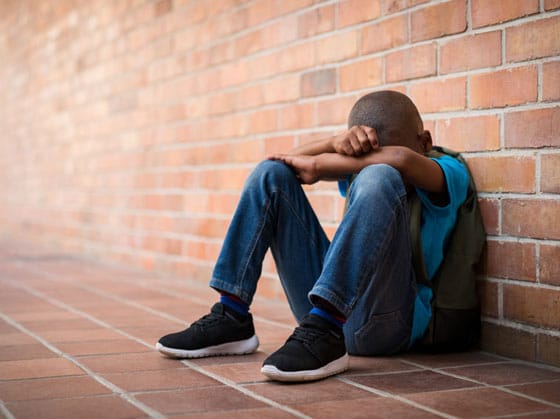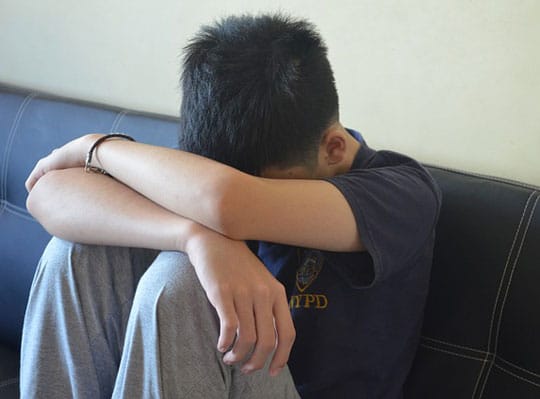
PCPs Are on the Front Lines of Suicide Prevention: Tools to Feel More Confident Having the Hard Conversations
- September 12, 2025
- The REACH Institute
- Assessment & screening, Child mental health, High-risk children & youth, Pediatric primary care, Suicide
“The first time you ask a kid about suicide, it’s scary,” explains Eugene Hershorin, MD, a developmental pediatrician and REACH faculty member. “But navigating that fear and asking the question can save a child’s life.” Research shows that primary care providers have a critical role to play in suicide prevention. Among youth, 80% of those…

Racism as trauma: A pediatric mental health perspective
- February 15, 2024
- The REACH Institute
- Anti-racism, Assessment & screening, Culturally responsive, Suicide, Trauma
After learning about the alarming rise in suicide rates among Black children and adolescents, Brittainy Erby, MD, set out to understand the impact of racial trauma and how to improve pediatric patient care.

Responding to the Alarming Rise of Depression in Adolescent Girls
- May 18, 2023
- The REACH Institute
- Anxiety, Assessment & screening, Child mental health, Depression, High-risk children & youth, Suicide
Gain a deeper understanding of the challenges faced by adolescent girls and the proactive steps clinicians can take to support them.

When and how to send kids to the emergency room
- November 15, 2022
- The REACH Institute
- Assessment & screening, Depression, Suicide
“The first thing I would say to any clinician is that it’s never wrong to send a child to the emergency room,” said Amy Dryer, MD, pediatrician and REACH faculty member.
Having spent 10 years in a hospital emergency department, Dr. Dryer is intimately familiar with the criteria ER physicians use to decide to admit psychiatric patients: a medical condition, suicidal ideation with a lethal plan, homicidal ideation, or active psychosis.
However, she emphasized that your decision to refer to the ER doesn’t hinge on whether the patient is likely to be admitted. “If what they’re telling you makes you uncomfortable,” she said, “go ahead and refer them.”

Suicide crisis among Black youth
- February 12, 2020
- The REACH Institute
- Child mental health, Culturally responsive Suicide,
As suicidality among adolescents generally has declined in the past three decades, suicide attempts among Black adolescents have risen, according to a November 2019 article in Pediatrics. A report to the Congressional Black Caucus (CBC) says that rates of suicide death have risen more for Black youth than for any other racial or ethnic group. A growing concern is that Black youth are less likely to report suicidal thoughts but more likely to attempt suicide; Black males are more likely to suffer injury or death as a result. Suicidality is also increasing among younger children. The reasons for these changes are not clear. However, the risk factors for suicidality and underlying mental health conditions among Black children and youth are myriad.

How PCPs can prevent teen suicide
- June 10, 2019
- The REACH Institute
- Child mental health, Depression, Pediatric primary care Suicide,
“It’s not just that we’re more aware of adolescent suicide,” said Michael Scharf, MD, chief of child and adolescent psychiatry at the University of Rochester Medical Center and a REACH faculty member. “The rate really is going up. Teen suicide is still rare, but it’s increasing.” Primary care providers (PCPs) can help teens at risk of suicide, first of all, by being willing to talk about it. “Some people think that asking about suicidal ideation makes the kid more likely to act,” said Dr. Scharf. “But evidence shows that asking either has no impact or has a relieving effect; it frees the patient to talk about the issue.” “You need to think ahead of time of what to ask and how, so you feel comfortable,” said Dr. Scharf. “You need a go-to way to assess risk and how likely the kid is to follow through.” (See Resources below.) The assessment results can range from “nothing to do here” to “send this kid to the emergency department.” “The tricky part,” Dr. Scharf said, “is what to do in between.”
Categories
- ADHD
- Anti-racism
- Anxiety
- Assessment & screening
- Autism
- Child mental health
- Coding
- Cognitive behavioral therapy
- College transition
- Culturally responsive
- Depression
- Eating disorders
- Foster care
- Grief
- High-risk children & youth
- LGBTQIA
- Medication
- Parents
- Patient communication
- Pediatric primary care
- School refusal
- Sleep disorders
- Suicide
- Trauma
- Show All Categories
Register for courses
“This is the first conference I’ve been to where I felt like the entire weekend will impact my practice I think that is due to the engaging, hands-on and fun format. It kept me engaged throughout. Also, I feel like the materials we received are sending me out into the world armed with the tools I need to put the information I learned into practice.”
